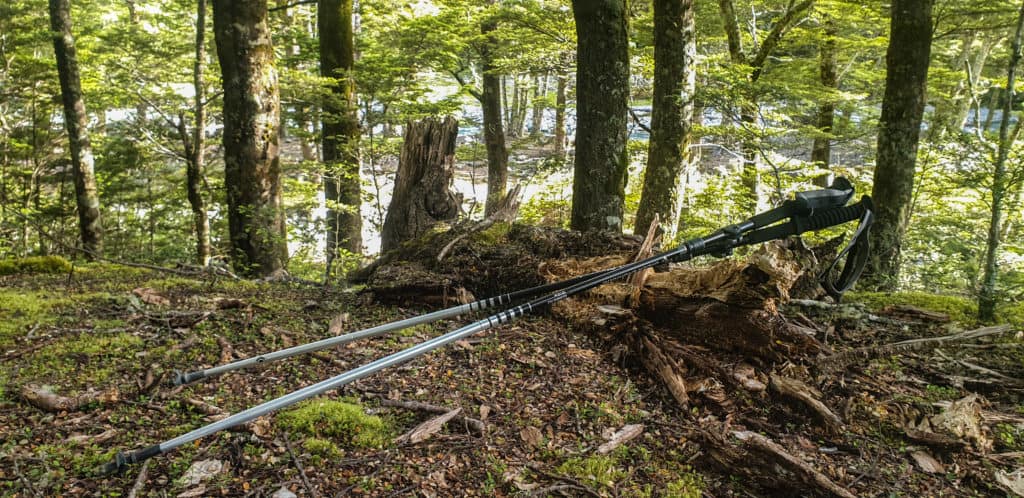
Have you ever wondered what it’s like to use hiking poles? Or walking poles, hiking sticks, a hiking staff, staff (singular), alpenstock, cane, crutch, walking aid or shillelagh? It turns out all are search results for the term ‘walking stick’.
Although I would love to know what the heck a shillelagh looks like, it turns out that the humble walking/hiking stick is not just suited for those who’ve seen too many winters, Gandalf the grey or your injured colleague.
Have you ever questioned: Are trekking poles worth it? Maybe you are unsure of their purpose or, why they are used? I don’t blame you, considering the terminology for the things!
This article is full of all of the possible information you need to decide if hiking poles are right for you and if so, enable you to use them like a boss!
Keep in mind this post contains affiliate links. If you purchase anything through them, I will get a small referral fee and you will be supporting me and my blog at no extra cost to you, so thank you!
Trekking vs Hiking: What’s the difference?

Firstly, I want to address the issue between ‘hiking’ and ‘trekking’. Have you ever asked yourself: What is the difference between hiking and trekking? Or, are trekking and hiking the same?
When I was doing research for this article I pondered on these questions and thought perhaps maybe, you would too.
Just a few months ago I was questioning hiking all together! In regards to hiking shoes. It seems as though trail runners are the new ‘it’ shoe for walking in the outdoors. What do you think? Pop on over to my article about it (here).
Honestly, here in New Zealand, there is almost NO difference between hiking and trekking. Heck, we even call the thing tramping! Basically they all mean the same thing with the point being to get you out walking in nature.
If you would like a hilarious in-depth discussion about this issue head on over to Sam’s article (here) from Ultimate Gear List where he discusses the matter.
The purpose of using hiking poles will be discussed in further detail in the section “Why use trekking poles?”. However, I want to point out that poles or walking sticks are genuinely used for more strenuous walks.
Here in NZ, a more strenuous walk would be called a ‘ tramp’ or, a ‘ trek’. So for the purpose of this article, I am going to mix up the vocabulary between hiking and trekking. Just to spice it up a bit! All good?
What are hiking poles?
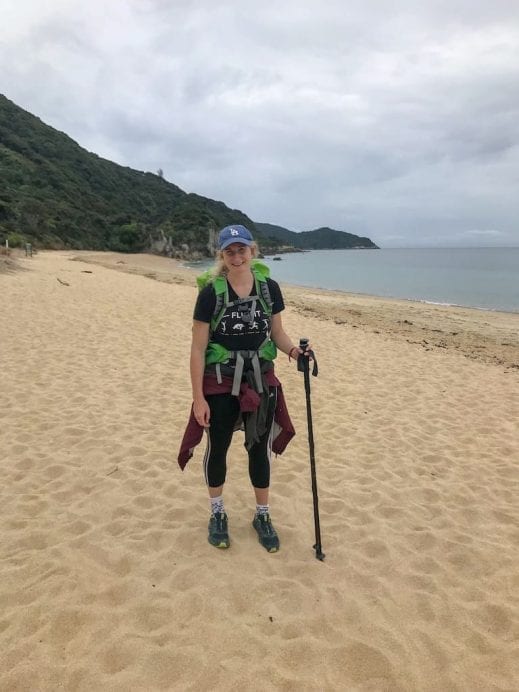
I am sure if you have landed on this article then you have seen a hiking pole, shillelagh or poles before. If so, this section is probably not relevant to you so feel free to scroll down.
If you have seen photos of hiking poles but never actually seen them in action before pop on over to this video by Chase Mountains who teaches you how to use trekking poles like a boss. He shows you what they are used for and how to use them.
If you have never seen them before that’s cool too. Hiking poles are essentially sticks that look like ski poles that you hold while walking.
Hiking poles have a handle that you hold onto and usually have movable sections to help you reach an appropriate length for your height. They work as though you have four legs and move with the natural rhythm of your arms.
Why use trekking poles?
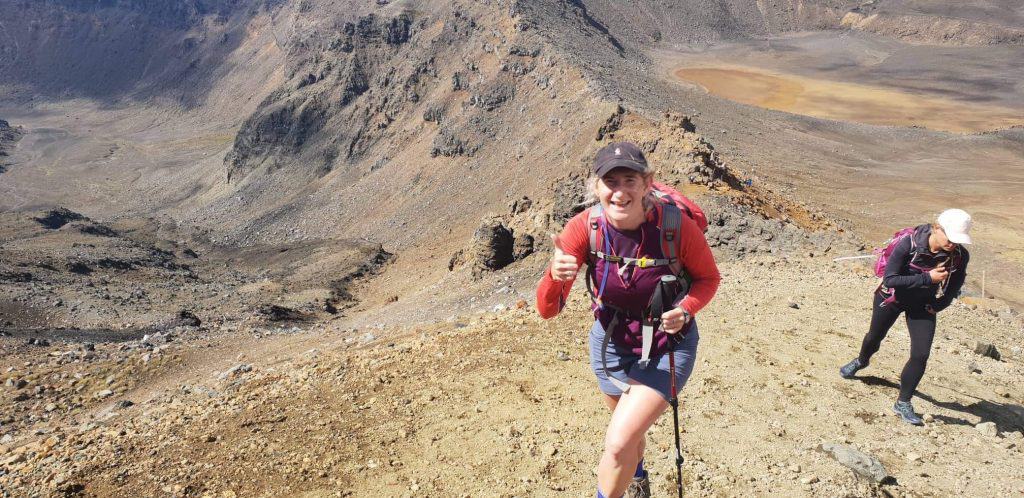
Lee only has one pole because she had to share with her partner…
Alright so now you know what hiking poles/ trekking poles/ walking sticks are, let’s delve into why on earth you would use them!
The best use of hiking poles is for walking. I know, ground-breaking. The first problem arises in their use. If you’re a skier, you will be a natural at using them. In fact, you can use trekking poles as ski poles and vice versa!
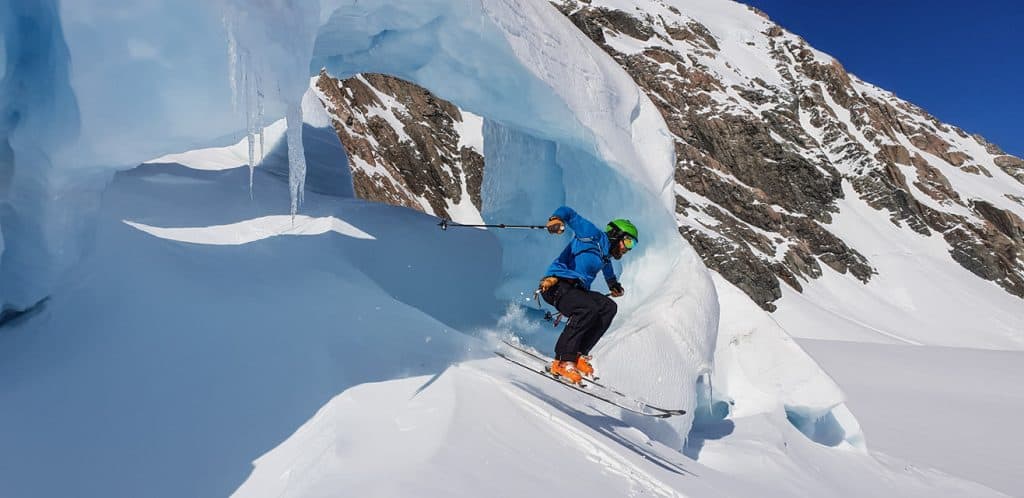
If you’re not a skier it can take a while for you to get used to them! (Cue the baby giraffe!). Once you’ve found your new legs, you can really begin to reap the benefits of #pole-life (somehow I don’t think that’ll stick?).
Trekking poles help with strain, heavy loads, steep slopes (up and down), support the knees and are especially beneficial in mountain country, travelling through snow or doing a stream crossing.
The two major benefits of using hiking poles are for;
Heath and performance. Outlined below are some of the best benefits I have found that hopefully, you will find too.
- Using poles deliberately transfers some of the weight from your knees, saves your back and improves your posture. I am a firm believer there are benefits of using trekking poles for your knees.
- Your downhill performance is greatly increased as you can push off and hold yourself up.
- Increased stability over varied terrain such as river crossings.
- With correct use, you should find reduced fatigue to your leg joints by changing hiking from leg-day-only to a full-body workout that will even help you get that six-pack!
- The load/weight you have will be much easier to carry and even make those uphill slogs bearable.
- The speed you hike at will likely increase as you use your poles to pull you up and push you forward.
The form you have selected does not exist.
Are trekking poles essential for a long hike? My answer is yes. With the use of poles, I immediately saw my fatigue decrease from my knees and back, my endurance increased from 20km to 30km a day and my speed went up to a whippy 4kmph.
Two Poles are better than one
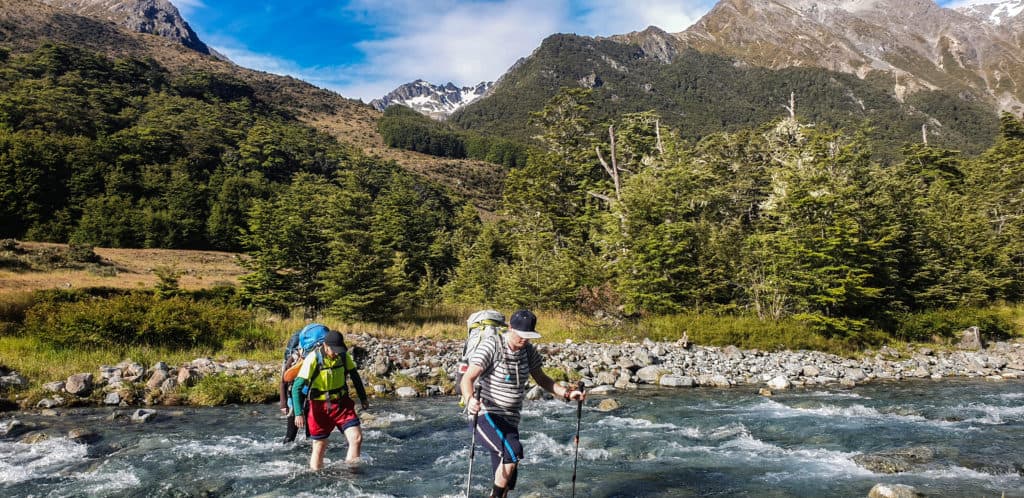
When hiking do you use one or two poles?
Ah, the old one trekking pole or two question.
You’ll notice I keep mentioning pole(s) however, I have dabbled in the word staff, walking aid and Gandalf pole (just you wait until I start talking about a shillelagh!). When it comes to hiking poles, two really is better.
Lee has been known to walk with one pole from time to time (when sharing with her partner) however the best benefits as mentioned above come when using poles in tandem.
Walking with one pole not only throws off your balance/posture and rhythm but it gives you less purchase to push off. You could also likely be mistaken for escaping from the local old people’s home or, a wannabe Gandalf as I had to be one hiking adventure after Lee dropped a sledgehammer on my foot… (Long story).
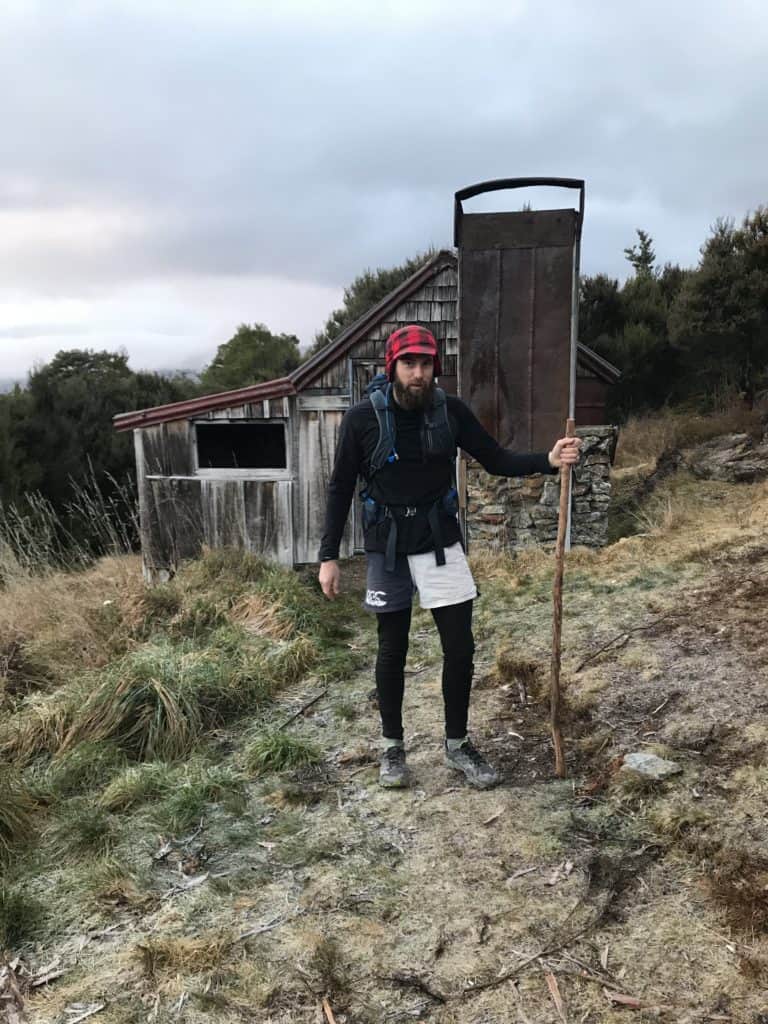
Stability is a big reason why I use hiking poles, especially when carrying my 45L paragliding pack. Hiking poles could have come in handy when I was travelling with my 95L Tatonka pack around New York (now that was a monkey on your back!). I had all my backpacking gear for summer/winter and paragliding gear inside… I was quite a sight! But then again, having poles may have just been another ‘thing’ to pack.
If you get anything out of this section it’s this: To reap the benefits of hiking poles you want to use two.
Why you shouldn’t use trekking poles

As mentioned above, I would not recommend using a singular trekking pole due to the overriding benefits of using them in unison. However, there are other reasons why you wouldn’t want to use hiking poles or a singular hiking pole. The reasons for this assumption is explained in this section.
Scrambling:
(Eggs anyone?) Scrambling is a term, not well known in beginner hiking communities and was a practice Lee didn’t know about until visiting me in Canada where we scrambled up Mount Yamnuska.
If you are unaware of what scrambling is not to worry! As Hike Table Mountain puts it “I define scrambling as the grey area between walking and climbing”.
Basically it is a term in between mountaineering, rock climbing, hiking and hill walking. You do not need specialist equipment to go scrambling but the practice in its nature is dangerous.
If you are walking up a steep mountain face that could just as well be classed as rock climbing then there is no way you could function with hiking poles. This is because when you are scrambling you are using your hands to aid you up the face. You are essentially rock climbing.
Heading down a scree slope:
Like the one below on the Tongariro Alpine Crossing in New Zealand. I have a feeling on this section of the track using trekking poles will cause you more harm than good!
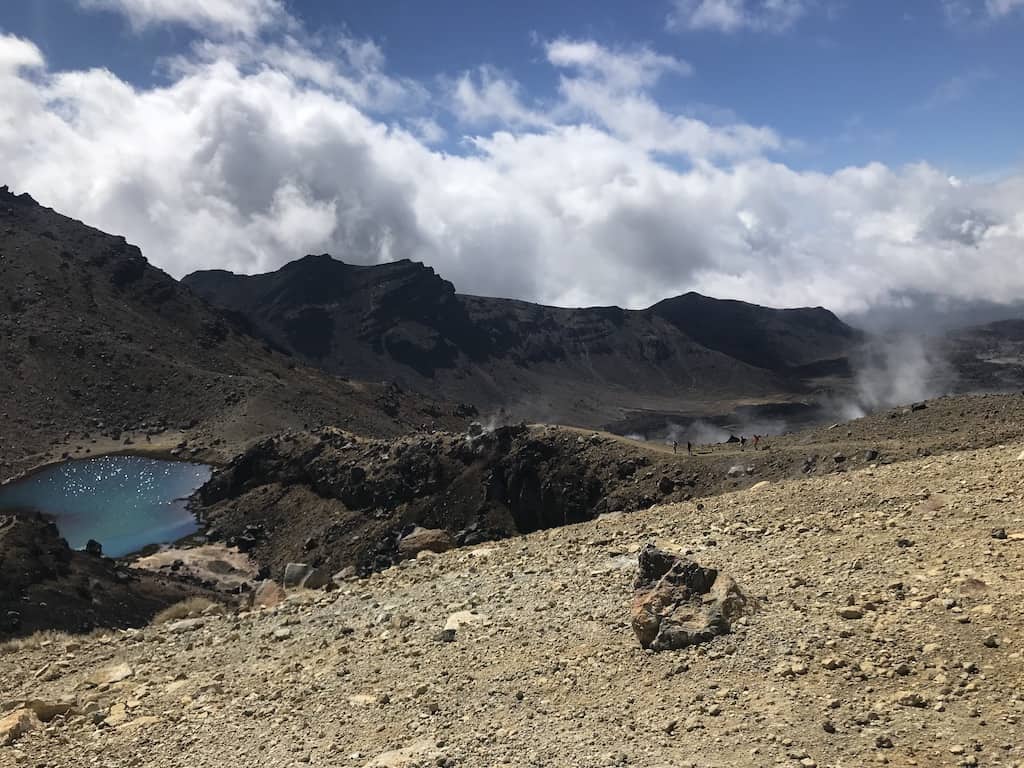
Extra weight:
Using hiking poles can be an inconvenience in the way they add weight to your pack and take away space. As I mentioned above the reason I didn’t take hiking poles with me to New York carrying a 95L pack wasn’t simply because I forgot them but I didn’t have room! Granted I was not hiking but carrying hiking poles while out walking can be annoying.
You’ll use more energy:
I know I know, the sole purpose of using hiking poles is to make hiking easier right? While this is true, it is also true that you will use more energy using hiking poles than not. This is because instead of just using your leg muscles you will engage the use of your arms and shoulders as well as your lower body muscles. This means more energy consumption!
But it also means you will use more calories and can take an extra chocolate bar (anyone?).
They tangle easily:
When just starting out using hiking poles you will notice how uncoordinated you feel. This is made even worse when you get the things caught under a rock or bush. Yes, they are supposed to make your life easier. Sometimes on a narrow trail, they do the opposite.
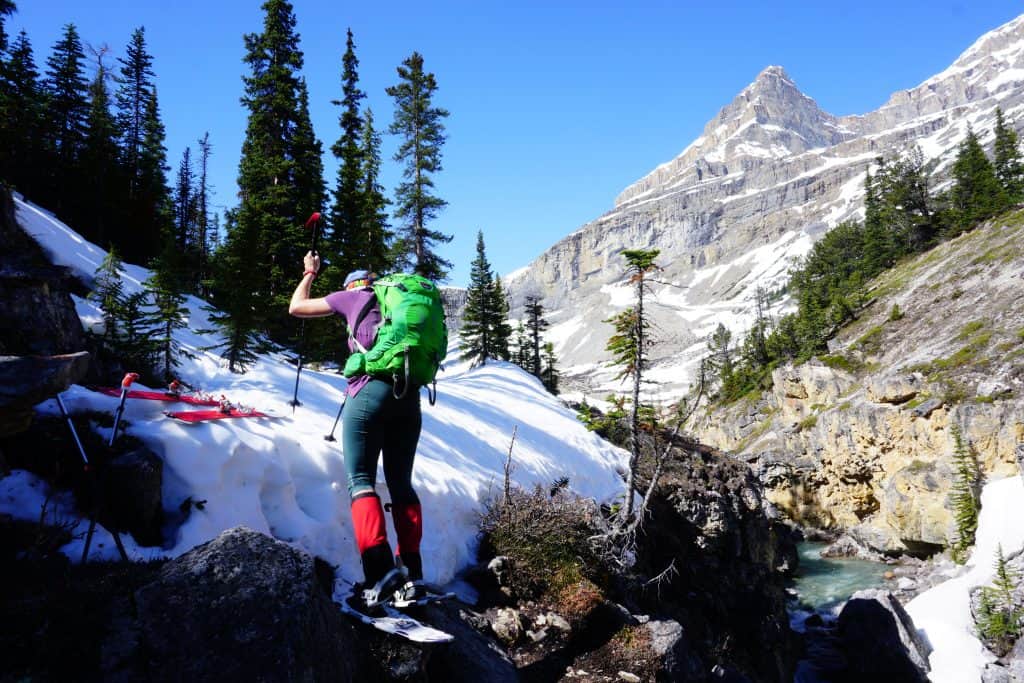
Environmental impact:
Hiking poles dig into the ground every time you plant them. You will certainly know when someone in front of you has been using poles as the evidence of the spike in the ground lasts a while. Extensive use of hiking poles can soften soil making it more exposed to erosion and sometimes poles can scar rocks.
My advice to you is to avoid using hiking poles when you don’t need to. The Appalachian Mountain Club suggests; Be mindful of potential environmental impacts where you plant your poles, avoid using them in soft conditions, use rubber tips where possible and consider removing the baskets at the end of poles in areas of dense vegetation.
Short or flat hikes:
For most people, it is not useful to use hiking poles on short or flat hikes. This is because you use more energy using hiking poles.
Unless you are carrying a large pack and could do with the extra support or have knee issues then you will likely feel as though they are unnecessary and just annoying. I would leave them at home on a short or flat hike but carry them on my pack if there is a steep ascent or descent in the mix. But this is up to personal preference!
Are trekking poles worth it?

I honestly believe if you use hiking poles you will enjoy your trek that much more. Not only will you be faster and less fatigued, but you are likely to be safer travelling through uneven terrain.
I didn’t start with that opinion. For a time, I was one of the hand-on-knee purists. Maybe it was the thought of a grizzly sneaking up on me that made me give them a go, but the more time I spent in North America and the more Europeans I met, the more I saw these dual-wielding pole enthusiasts.
It’s commonplace in Europe to use walking poles on treks. If you’ve happened upon mountain running one elitist step above trail running, you’ll see they use two poles for good reason.
By now you know there are many benefits of hiking poles. However, although trekking poles provide a great deal of support and stability you may find they get in the way in bush covered or narrow terrain.
The use of trekking poles really comes down to personal preference. Over time and many years of use, I have learnt to swear by them but I definitely have a preference as to when I use them.
How to use hiking poles
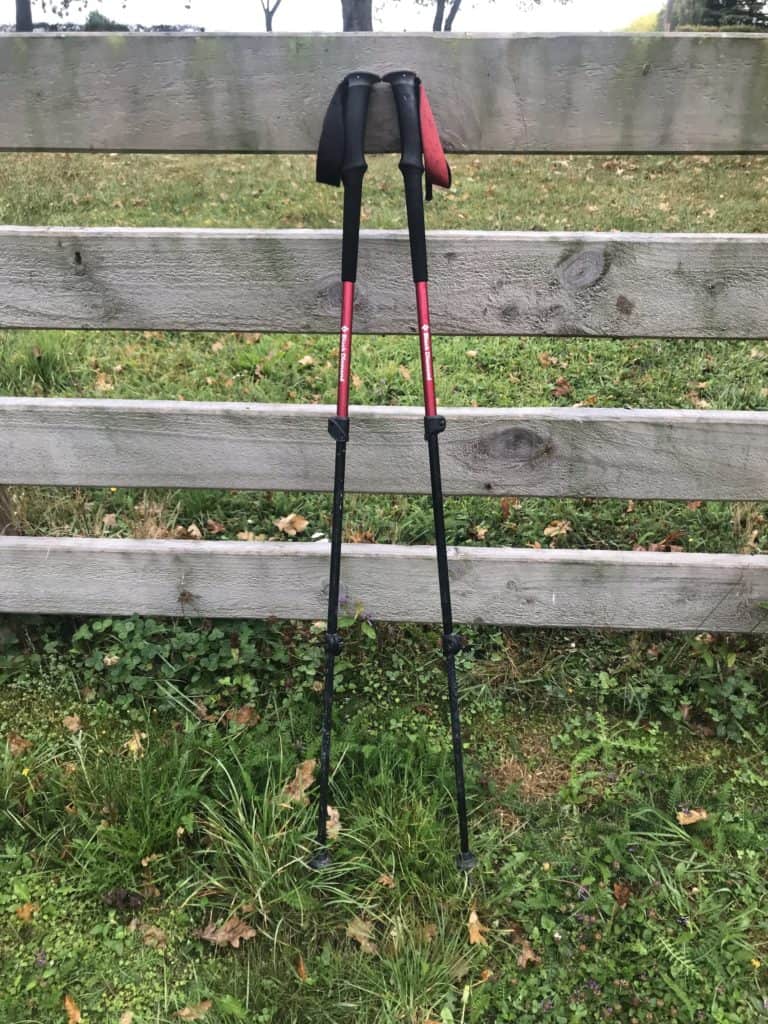
When you first pick up a pair of hiking poles they may feel strange and like you probably shouldn’t be using them off the ski slope. Using trekking poles isn’t actually that hard (with practice). Let’s walk you through the process! (No pun intended).
Step one: Adjusting your hiking poles
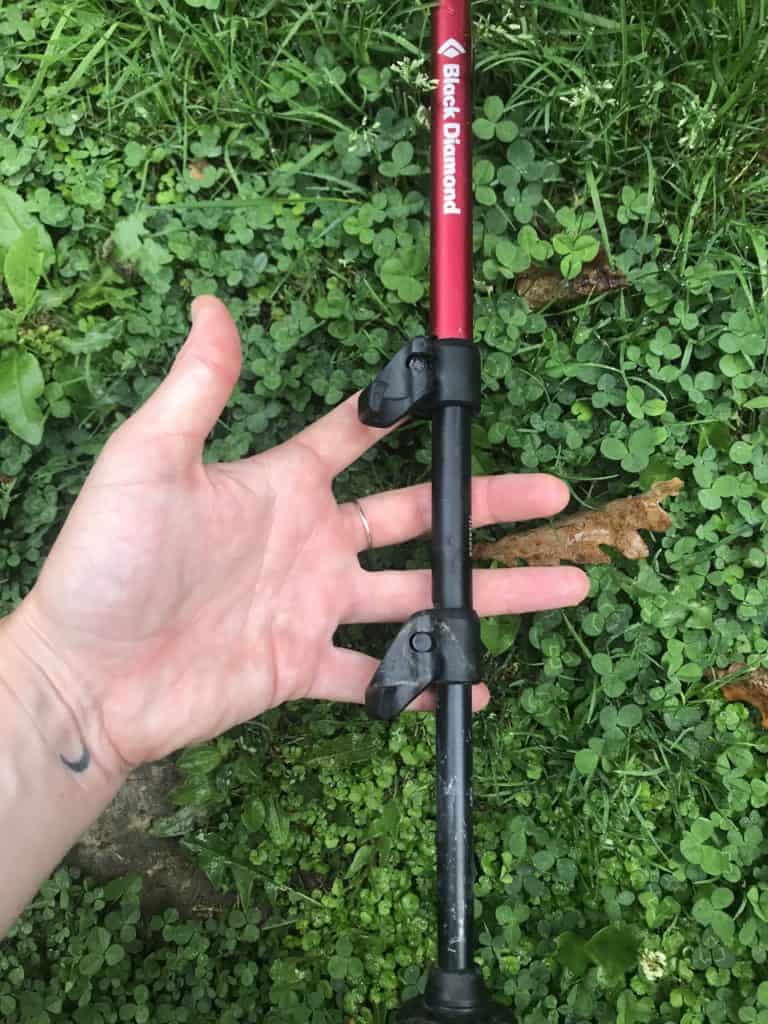
Grab your pair of adjustable hiking poles. They will need to be moved to the right height for you. Flip open the clasps or unscrew the desired tension and adjust the pole so that your elbow is at a 90-degree angle. Golden tip! The number on the top segment of the pole must be the same as the bottom segment!
Lee continues to ask me every time we are out hiking together “Bro, how long should my hiking poles be?” and“What are your tips for adjusting hiking poles?” I somehow think after numerous outdoor adventures together she should know this by now…
When moving through varied terrain, use the shaft on the shorter part of the pole on the uphill side. Push off the top of the pole when moving downhill.
For trekking pole efficiency when travelling downhill you will want to make your pole a little longer. This is to ensure you do not bend down to reach the pole and keep upright. When travelling uphill your poles should be a little shorter. Very Well Fit suggests when going uphill, you may want to shorten your polls by 5 cm and when going downhill you may want to lengthen them by 5 cm.
Step two: Using your trekking pole straps
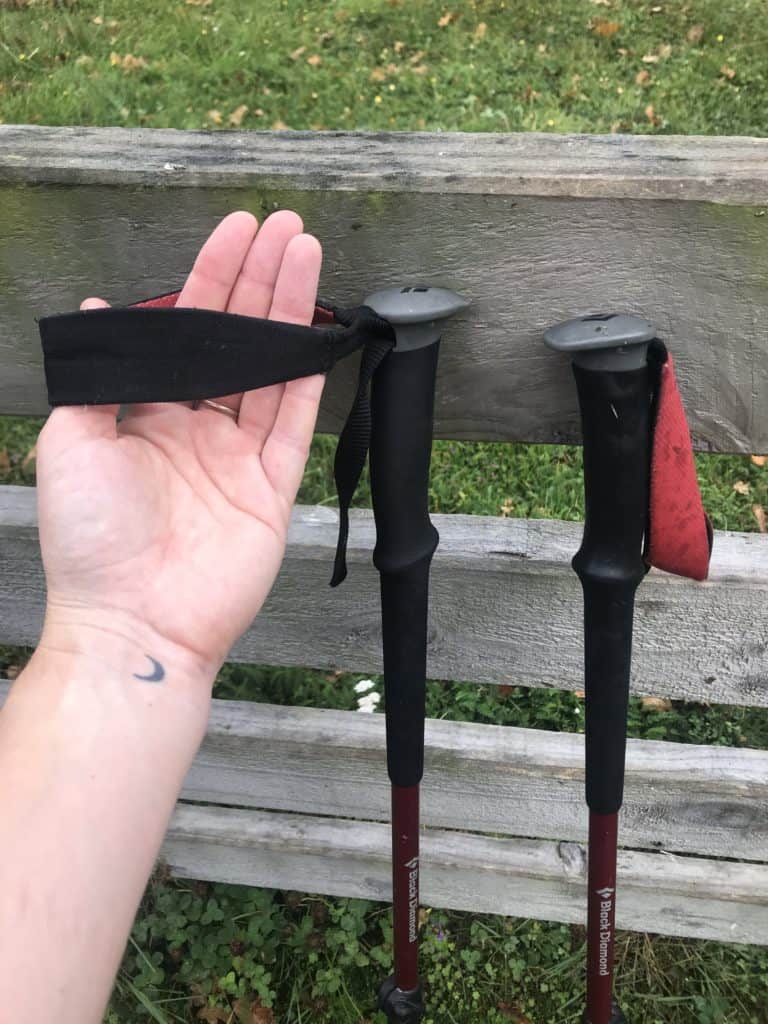
Move your hands through the strap from the bottom up until it sits snug around your wrist. As Montem hiking blog suggests; A strap is used to help support the weight of your hand on the pole and should not be too loose.
Step 3: How to walk with trekking poles

Walking with poles in the first instance will feel strange but it is pretty simple. Think about the way you walk naturally and try to combine the pole movement with the way your hands naturally sway.
I could spend a while describing the technique but to save time pop on over to this youtube video (here) by Chase Mountains who teaches you how to use trekking poles like a boss! Skip through to 2 minutes where he shows you the exact technique to using poles.
Should I get a pair of trekking poles?

Photo by Fabrizio Conti on Unsplash
Using trekking poles can:
- Take the workload off the legs
- Enhance your walking speed
- Add stability
- Help with excess weight strain
- Reduce joint soreness on days following a hike
- Help you travel a longer distance
If any of these benefits resonate with you then yes, you should get a pair of hiking poles. If you usually go for walks on flat ground, for less than a few hours think they get in the way then no, don’t get a pair of hiking poles.
Again, this comes down to personal preference and I do like to mix my hikes up with and without poles. If you are keen on getting yourself a pair then hopefully the review below gives you some inspiration into the type of poles that will suit your needs.
Trekking poles review and the best trekking poles
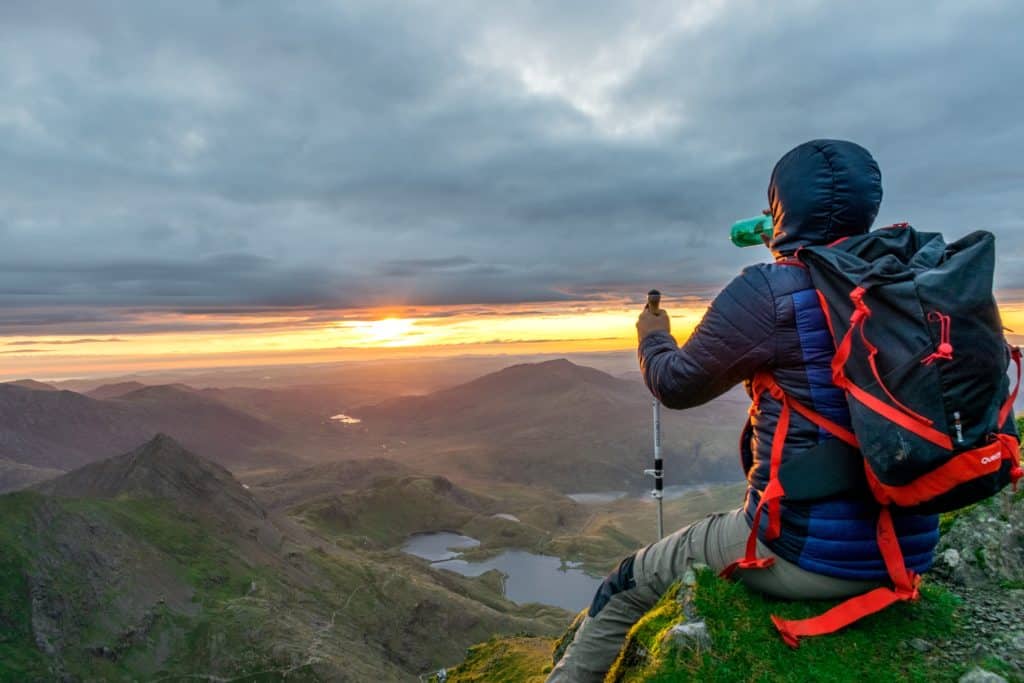
Photo by Khamkhor on Unsplash
Finding the best pair of hiking poles doesn’t have to be a tricky task. You can go as inexpensive or as costly as you like. A simple pair of $2 ski poles will work fine, so long as they are the right length. You can use your current ski poles. I have adjustable poles and have used these many times.
There are awesome brands on the market with great options. Here are a few things you may want to consider when choosing a hiking pole:
- Should I buy shock-absorbent poles? If you have had an injury or are using poles to support your knees and hips a pair of shock-absorbent poles will be beneficial.
- Do I need lightweight poles? Are you carrying a heavy pack? The best lightweight trekking poles are carbon fibre poles!
- What size do I need? Most websites will have a size guide to look at before you buy. Black Diamond, for example, has a helpful size chart on their website
- Fixed or adjustable? While fixed is remarkably stronger and have fewer moving parts, adjustable, while more expensive, are now equally light and strong as fixed, with extremely packable properties – I prefer compact hiking poles and take mine paragliding.
So what are the best hiking poles?
Lee and I are fans of Black Diamond who is a leading brand in the hiking pole industry.
I rep a pair of Black Diamond Distance FLZ Trekking Poles. I purchased these because I was looking for ultralight trekking poles. They are made out of carbon fibre, meaning they are incredibly durable and the best lightweight hiking poles I could find on the market. I also wanted a pair of collapsible trekking poles for easy storage.
If you would like to get yourself a pair click on the photo below to be taken straight to Amazon. If you do purchase the poles please know Lee will get a small bonus at no extra cost to you! Doing so helps Lee to keep this blog running so thank you 🙂
For a more in-depth review of the various hiking poles on the market pop on over to Clever Hiker’s article about the 7 Best Trekking Poles for 2020.
Where to buy trekking poles:
You can buy hiking poles at most outdoor stores and online. Below are a few recommendations:
- The best women’s trekking poles according to Outdoor Gear Lab is the Leki Women’s Micro Vario Carbon. They rate well for comfort, look and versatility.
- The best hiking poles for men also according to Outdoor Gear Lab seem to be the Leki Micro Vario Carbon.
- If you’re looking for the best budget trekking poles then as I mentioned at the start of this post you can opt for a simple ski pole. However, you are able to purchase a good set of poles and not break the bank!
- Cascade Mountain Tech Carbon Fiber look as though they are the best bang for your buck sitting at around $47 NZD! They are a little bit bulkier than other poles but for the price, you can’t complain!
- What are the best trekking poles for trail running? The Wired Runner suggests Leki or Black Diamond. The Leki Micro RCM looks like a great choice as it collapses easily, comfortable and has flex tips that help with stability!
Other uses of trekking poles
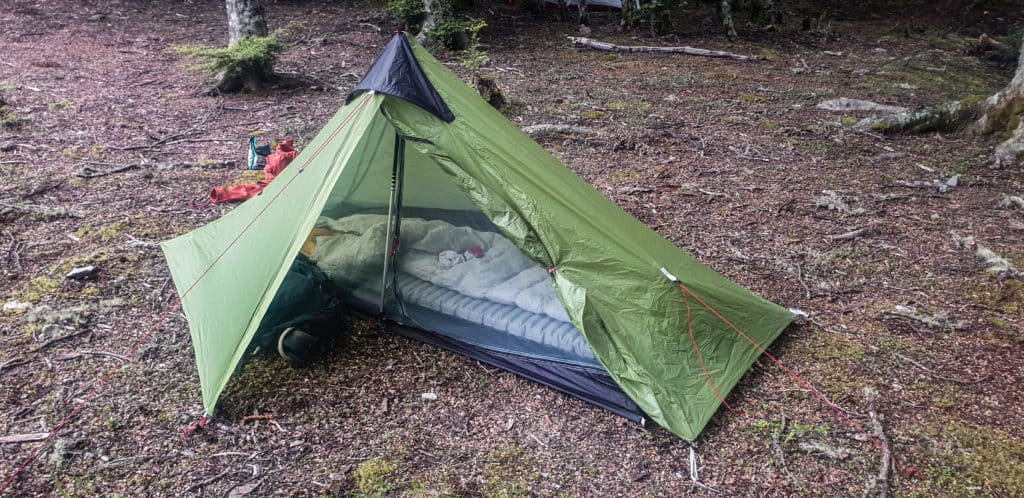
These poles aren’t just for walking…
No, it’s not witchcraft. Hiking poles have many more uses than just for walking. My favourite new sleep system involves one, which is used to support my tent instead of actual tent poles – ingenious! Yes crazy but there are tents that use trekking poles!
- Tent poles & Shelter support. You can purchase one from Amazon below!
- Skiing – Yes there are trekking poles for skiing and vice versa!
- Travel- Although I didn’t use travel hiking poles for my 95L pack around New York I wouldn’t be opposed to using them second time around…
- First Aid splint – Relating back to safety, you won’t find a better splint to help in those serious first aid situations.
- Selfie stick – The stick everyone loves to hate.
- Anchors – Although I’d recommend caution, wedge it between a tree, or bury it in the snow, boom, you have a rappel anchor.
- Bush wacking– Sometimes, this may be necessary!
- Self-rescue- As I have found out from first-hand experience… The ice axe on my ski hiking poles literally saved my life.
- Pointing stick – Everyone loves a good pointer in the wilderness!
- Javelins for catching dinner. Ok, maybe not the last two.
Next time you’re out, give them a go, I know you’ll be glad you did.
Until next time,
Brave and Lee

Remember how I said I would talk about the shillelagh? Well, here it is! To be honest, I had no idea what it was before this article but it turns out it’s a walking stick-club cudgel thing from Ireland. Remind me not to annoy any elderly in Ireland! (If you want to buy one… just click on the photo to be taken straight to Amazon!).
You may also like Lee’s article on hiking boots vs sandals: Hiking boots are not needed in New Zealand.
Let me know if you have any questions in the comment box below! And be sure to check out Lee’s New Zealand travel articles! Or, pop on back to the home page.
About the author:
Evan is a paraglider, backcountry skier, trail runner and mountaineer who seeks outdoor adventures at any opportunity he can get. If you’re keen to learn more from him you can contact him via his email address: evan.mckenzie@outlook.co.nz or Instagram @ev_mckenzie.











Leave a Reply